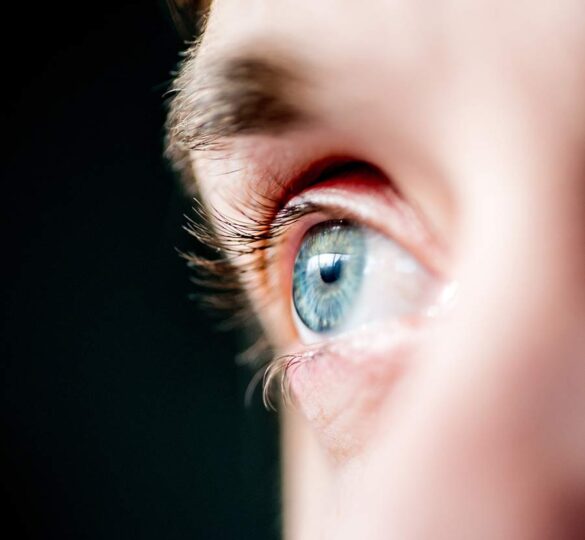Iridotomía láser: Preguntas frecuentes

La iridotomía periférica con láser es el tratamiento de primera línea estándar en el glaucoma de ángulo cerrado y para los ojos en riesgo de desarrollar esta afección.
Laser peripheral iridotomy is the standard first-line treatment in angle-closure glaucoma and for eyes at risk of developing this condition.
It has been used since 1984 as a treatment and prevention of the disease.
1. What is angle and what is angle closure glaucoma?
The angle is the space between the transparent part of the eye (cornea) and the colored part (iris), near their meeting point near the edge of the iris. It contains the trabecular meshwork, which is the main structure that directs fluid out of the eye. The angle can be examined with a test called gonioscopy, which is performed by the ophthalmologist in the office.
In angle-closure glaucoma, the angle is closed in many or most areas, causing increased eye pressure, resulting in damage to the optic nerve and possible vision loss. Increased eye pressure can occur suddenly (an acute angle-closure attack) or gradually. There are also precursor forms of the disease in which the angle is closed, but the eye pressure is not high and the optic nerve is not yet affected.
2. How does laser iridotomy work?
It creates a hole in the outer edge of the iris, causing the angle to open in most cases. After the angle is widened as a result of the procedure, the trabecular meshwork is exposed and fluid drainage improves.
3. Who are candidates for laser iridotomy?
It is recommended in eyes that have a closed angle for at least half of the eye and that have high eye pressure or glaucoma. In eyes that have angle closure, but normal eye pressure, and no optic nerve damage, laser iridotomy may be recommended as a preventive treatment. A recent large prospective study of such eyes showed that there was generally a low risk of developing high eye pressure, but the risk was lower among eyes that received laser iridotomy compared with those that received laser iridotomy. They didn’t receive it.
4. What should I expect during the procedure?
The eye is usually pretreated about half an hour before the procedure with drops that constrict the pupil. Just before the procedure, numbing drops are placed to numb the surface of the eye, and then a lens is placed in the eye to perform the laser procedure. The procedure typically takes 5 to 10 minutes and some patients may experience mild pain.
5. What should I expect after the procedure?
You will have blurred vision for a while. The eye may be a little red, sensitive to light and/or uncomfortable, and there may also be a slight headache due to the eye drops given before the laser. Eye pressure is usually assessed between 30 minutes and 2 hours after the laser, and anti-inflammatory eye drops are usually prescribed for a few days.
6. Will the laser improve my vision?
No. Iridotomy is intended to preserve vision and prevent glaucoma from developing or progressing.
7. What are the risks?
Possible risks include increased eye pressure, bleeding at the laser site, and inflammation; These are generally temporary. Closure of the iridotomy may occur, requiring repeat treatment. In rare cases, additional visual images, such as bright lights or flashes, or double vision, may appear in the treated eye.
8. What happens if it doesn’t work?
In about 25% of cases, the angle may not open. Depending on the situation, some patients may need other laser procedures, medical treatment, or surgery. Your ophthalmologist may suggest close monitoring.
9. If I have glaucoma, will I still need to use my glaucoma medications?
Yes. Laser iridotomy does not replace glaucoma eye drops in most cases if the patient was already using them before the procedure.
10. How long does the effect last?
Although the angle widens in most cases after laser, normal age-related changes can subsequently alter the angle region. Cataract formation could close the angle again and cataract extraction may be required.

Shan Lin, MD
Shan Lin, MD is a glaucoma specialist at the Glaucoma Center of San Francisco. Dr. Lin specializes in glaucoma and cataract surgery, and in his research he studies new medications for the treatment of progressive glaucoma and ocular hypertension.